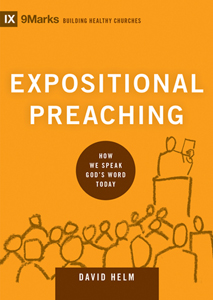He is known as “The Prince of Preachers,” but “The Soul-Winner” would be just as apt a title for Charles Haddon Spurgeon. Nothing gave him greater joy than seeing a sinner come to Christ.
One of his greatest lectures is titled “On Conversion as Our Aim.” He says, “Our great object of glorifying God is . . . mainly achieved by the winning of souls. We must see souls born unto God.” From there Spurgeon goes on to provide various actions necessary to bring souls to Christ.
Lest any Calvinist bristle at his emphasis on human means, Spurgeon says from the outset, “Since conversion is a divine work, we must take care that we depend entirely upon the Spirit of God, and look to Him for power over men’s minds.” The Spirit is sovereign over salvation and thus we must long for his unction and movement in our preaching.
One final exhortation in the lecture is worth our concentration. The Prince calls his students to consider how tone, temper, and spirit in preaching are essential elements of “soul-winning preaching.”
LET THEM SEE, HEAR, AND FEEL YOUR GOSPEL
“If you preach the truth in a dull, monotonous style, God may bless it, but in all probability he will not; at any rate the tendency of such a style is not to promote attention, but to hinder it. It is not often that sinners are awakened by ministers who are themselves asleep. A hard, unfeeling mode of speech is also to be avoided; want of tenderness is a sad lack, and repels rather than attracts,” Spurgeon exhorts.
His belief in God’s sovereign work through the ordinary means created great confidence in the work of preaching, “Happy shall we be if we preach believingly, always expecting the Lord to bless his own word. This will give us a quiet confidence which will forbid petulance, rashness, and weariness. . . . “Mean conversions, expect them, and prepare for them. Resolve that your hearers shall either yield to your Lord or be without excuse, and that this shall be the immediate result of the sermon now in hand.”
He also understood the appropriate balance between gravity and humor, saying, “Preach very solemnly, for it is a weighty business, but let your matter be lively and pleasing, for this will prevent solemnity from souring into dreariness. Be so thoroughly solemn that all your faculties are aroused and consecrated, and then a dash of humour will only add intenser gravity to the discourse, even as a flash of lightning makes midnight darkness all the more impressive.”
His final instructions are well worth a block quote. Read them carefully and let them challenge your perspective on preaching,
Impressed with a sense of their danger, give the ungodly no rest in their sins; knock again and again at the door of their hearts, and knock as for life and death. Your solicitude, your earnestness, your anxiety, your travailing in birth for them God will bless to their arousing. God works mightily by this instrumentality. But our agony for souls must be real and not feigned, and therefore our hearts must be wrought into true sympathy with God. Low piety means little spiritual power. Extremely pointed addresses may be delivered by men whose hearts are out of order with the Lord, but their result must be small. There is a something in the very tone of the man who has been with Jesus which has more power to touch the heart than the most perfect oratory: remember this and maintain an unbroken walk with God. You will need much night-work in secret if you are to gather many of your Lord’s lost sheep. Only by prayer and fasting can you gain power to cast out the worst of devils. Let men say what they will about sovereignty, God connects special success with special states of heart, and if these are lacking he will not do many mighty works.
Brothers, let us use all our faculties in the grand aim of soul-winning. May God awaken our hearts to the glory of His sovereign grace, power of His gospel and ordinary means, the plight of sinful men that stand around us, and let us preach with passion and power. We want Spurgeons in our pulpits!











